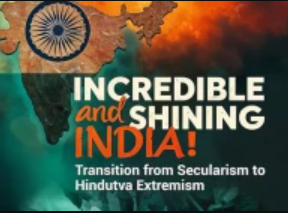While Love Guru continues its remarkable streak at the box office — reportedly raking in ₹70 crore worldwide — the film’s runaway success, alongside sleeper hit Deemak (a modest horror flick that grossed ₹13 crore), proves one thing: Pakistani audiences are still willing to buy a ticket, even at the current average price of ₹1,000. But that’s where the good news ends.
The wider state of Pakistani cinema paints a far bleaker picture. With very few notable productions in the pipeline — and none on the scale of a London Nahi Jaunga or The Legend of Maula Jatt — the industry is effectively on pause. Current works in progress include Luv Di Saun (Farhan Saeed), Mango Jatt (produced by Hareem Farooq), an untitled Shaan Shahid romance, Welcome to Punjab, Price of Honour, Lalkara Singh in Lahore, Meri Jannat, Delhi Gate, and Seylum — but a handful of titles cannot sustain an industry.
Years of division between Lahore and Karachi’s film factions, bureaucratic delays, lack of investor confidence, and a void in effective leadership have all brought the local film machine to a grinding halt. The pandemic may have been the tipping point, but the cracks in the system go back further — deepened now by infighting, mismanaged government grants, and absent regulation.
Even with global box office revenues recovering steadily — from $8.62 billion in 2020 to a projected $34 billion by the end of 2025 — Pakistani cinema has lagged. Domestically, there’s no centralised reporting of box office numbers, making it difficult to separate hype from reality. Most local releases barely recover their budgets — an average film costing ₹5–7 crore needs to earn ₹15–21 crore to break even. Yet, only a few cross the ₹13–16 crore mark, and the majority earn a paltry ₹1–3 crore.
This lack of commercial viability has chased private investors away. Enter the government.
In 2023, the federal government launched a promising ₹1 billion film grant scheme — a bailout of sorts for an industry in decline. However, bureaucratic red tape meant the money was never disbursed, and previous submissions were rendered ineligible as a new fiscal year began. A fresh call for submissions in May 2025 brought confusion instead of clarity — now expanding eligibility to include telefilms, music videos, and documentaries, with an emphasis on state-centric themes like “national security,” “counterterrorism,” and “foreign policy.”
Disillusionment set in quickly. Many filmmakers had pinned their hopes — and production schedules — on receiving grants. When nothing materialised, productions stalled, cinema halls shut down, and the number of screens across Pakistan dwindled from 150 to just 110.
Recognising the debacle, the Punjab government under Chief Minister Maryam Nawaz launched its own film fund — worth ₹2 billion, twice the size of the federal one. With 255 submissions received and ₹3 crore promised per qualifying film, the initiative has been met with cautious optimism. Additionally, a box-office incentivisation scheme is in the works to reward filmmakers based on performance — a potentially groundbreaking move if implemented efficiently.
Sindh has also introduced a film fund, but its model leans heavily on work-for-hire agreements tied to pre-approved government themes, with intellectual property rights retained by the Information Department — a structure that sidelines independent creatives.
Though government support is a welcome step, these one-time injections are no long-term fix. Without regulatory frameworks, transparency in box office reporting, and mechanisms for attracting private and corporate investment, the impact of such grants will likely be temporary.
To its credit, the industry still produces the occasional hit. Films like Love Guru, London Nahi Jaunga, and The Legend of Maula Jatt have drawn large crowds, showing that when content is compelling and commercially savvy, audiences will show up.
But deeper issues persist. The ongoing power struggle between Karachi and Lahore continues to fracture the industry. Disputes over leadership within the Pakistan Film Producers Association (PFPA) have landed in court, stalling vital organisational progress. Allegations of election rigging within the PFPA and murmurs of regional favouritism further exacerbate the divide.
Adding to the frustration is the industry’s own self-sabotage. Veteran filmmakers lament the lack of support from top-tier stars — such as Humayun Saeed, Mahira Khan, and Mehwish Hayat — who reportedly turn down scripts citing poor quality or lack of vision. This further alienates legacy filmmakers and widens the talent gap.
Still, Love Guru‘s commercial performance has, at least temporarily, silenced the loudest critics. While the film may not be a cinematic masterpiece, it demonstrates what Icon has long argued: Pakistani audiences want quality escapist entertainment — and will turn up in droves for it. Sub-standard films, however, will no longer be tolerated.
The road to recovery isn’t impossible. But it requires the film fraternity — fractured as it is — to rally around one shared goal: making consistently good films. The formula isn’t complicated, but the will to execute it seems lost in petty rivalries, bureaucratic misfires, and a short-sighted view of what Pakistani cinema could become.
Until the industry chooses unity over discord and quality over quick wins, Love Guru may remain the exception, not the rule.








